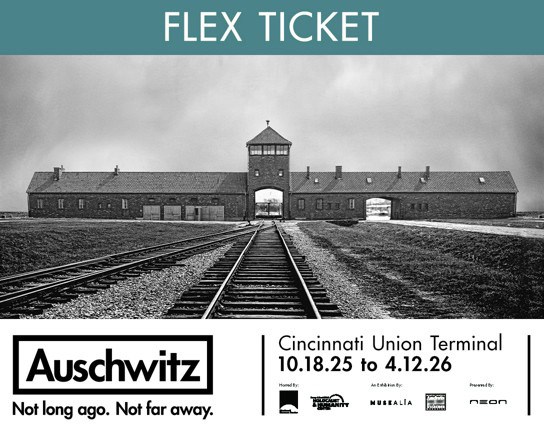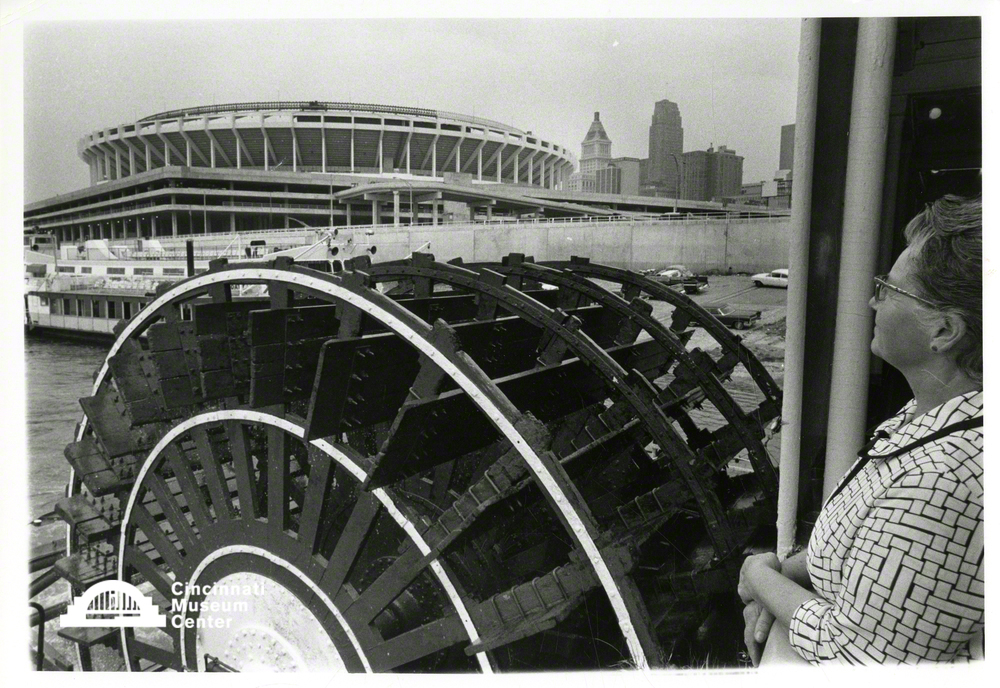
Historical Objects & Fine Art
Historical Objects
Our Historical Object collections consist of numerous smaller collections and includes artifacts related to high fashion, science & technology, industry, transportation, sports & recreation, religion and Union Terminal. We consider ourselves stewards of Cincinnati’s heritage, and the history collection at Geier is like the city’s treasure trove.
High fashion and everyday dress of the past 175 years is represented in our collection of historic clothing. It consists of women's and men’s formal attire, wedding dresses, fashion accessories, everyday business and workman’s clothing, children’s clothing and military uniforms. Pieces from local 19th and early 20th century furniture and clock manufacturers such as Read & Watson (1809-1816), Luman Watson (1819-1836), Walter and Meader Co., J. Dornette Co., Mitchell and Rammelsburg and Front Street Furniture Factory are part of the holdings, as are machine tools from Putnam Co., Cincinnati Screw & Tap Co., Cincinnati Screw & Tap Co., LeBlond Co., Lodge & Shipley and other local manufacturers.
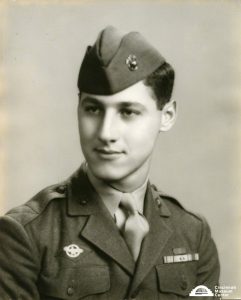 The science & technology sub-collection consists of hundreds of surgical kits, microscopes, dental instruments, medical furniture, surveying and navigation instruments, measuring devices, scales and balances and experimental pieces. The changes that occurred in surgical techniques, anesthesia and sterilization during and after the American Civil War are documented in the collection. Agricultural implements and other artifacts that supported the daily existence of earlier generations of Cincinnatians are present, as are the tools, materials and products of artisans – the blacksmith, cabinetmaker, wheelwright, silversmith, watchmaker, tailor and seamstress, for example.
The science & technology sub-collection consists of hundreds of surgical kits, microscopes, dental instruments, medical furniture, surveying and navigation instruments, measuring devices, scales and balances and experimental pieces. The changes that occurred in surgical techniques, anesthesia and sterilization during and after the American Civil War are documented in the collection. Agricultural implements and other artifacts that supported the daily existence of earlier generations of Cincinnatians are present, as are the tools, materials and products of artisans – the blacksmith, cabinetmaker, wheelwright, silversmith, watchmaker, tailor and seamstress, for example.
A broad range of objects documenting the industrial heritage of the greater Cincinnati region are present in the collection. For example, several hundred beer bottles in the collection reflect the various periods of production and the more than one hundred breweries that operated in Cincinnati between 1806 and 1919. The collection also contains beer barrels, brewery and tavern glassware, advertising trays, decorative signs and lithograph art.

The largest transportation artifact in the collection is streetcar #2435, produced by the Cincinnati Car Company in 1923. Other vehicles include a 1910 Model K Schacht runabout, a 1925 Model T Ford depot hack, two Crosley automobiles, ca. 1951, and an Aeronca 65L (Tandem Trainer) airplane. The railroad collection includes materials and building components related to Cincinnati Union Terminal.
A broad artifact category includes the equipment of sound communication, broadcasting, printing, photography, written communication and printing. Many such objects form part of the Museum’s holdings.
Hundreds of Cincinnati political campaign buttons, medals, badges, ribbons and banners from all periods make up a large portion of the documentary object sub-collection. In use since the early 19th century, political campaign pieces reflect not only the local political races and issues but also state and national campaigns. Other documentary artifacts are labor union buttons and badges, police and fire department badges, and symbols related to businesses, schools, youth groups, clubs, fraternal organizations, fairs, expositions and celebrations.
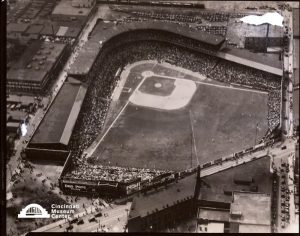 The sports and recreation category contains a variety of baseball, football, basketball, track and field and related artifacts and accessories. This category also features many toys, games and building sets that were popular in Cincinnati throughout the decades, including electric trains produced by the Carlisle & Finch Co., late 19th-century dolls by the Goldsmith Co., and modern Star Wars and Nerf toys by the Kenner Toy Co. The musical instrument sub-collection has grown in recent years to include two Cincinnati-made player pianos, two pump organs, a square grand piano and a Huettl Co. flute of 1875. The big band instruments of WLW performer Harry Raiburn and the jazz trumpet of Frankie Brown are also part of the collection.
The sports and recreation category contains a variety of baseball, football, basketball, track and field and related artifacts and accessories. This category also features many toys, games and building sets that were popular in Cincinnati throughout the decades, including electric trains produced by the Carlisle & Finch Co., late 19th-century dolls by the Goldsmith Co., and modern Star Wars and Nerf toys by the Kenner Toy Co. The musical instrument sub-collection has grown in recent years to include two Cincinnati-made player pianos, two pump organs, a square grand piano and a Huettl Co. flute of 1875. The big band instruments of WLW performer Harry Raiburn and the jazz trumpet of Frankie Brown are also part of the collection.
Protestant and Catholic ceremonial artifacts, altarpieces, communion sets, crucifixes and prayer books of the late 19th and early 20th centuries dominate the religion sub-collection as a reflection of the Irish, English and German immigrants that settled in Cincinnati.
We have a special sub-collection that consists of furnishings and building elements from the original Union Terminal train station. The Union Terminal collection is used to interpret the history of Union Terminal. The objects in this collection are not accessioned because they may be restored or altered to meet current and/or future interpretive plans. Activity of the Union Terminal collection is closely tied to the progress of the Union Terminal Building Master Plan. Elements within the Union Terminal collections will be restored and utilized as needed for programming and historic interpretation of Union Terminal.
History of the Historical Objects Collection
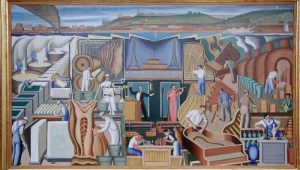
Although the Cincinnati Historical Society was established in 1831, its collecting was primarily focused on archival materials. A concerted effort to actively collect the material culture of the region began in 1986, when plans were made to establish a museum at Cincinnati Union Terminal. At that time a Curator of Historical Collections was hired to manage the collecting and research and preserve the historical objects and fine art collected. The Curator of Historical Collections also assisted in the design and installation of museum exhibits. The Historical Objects Collection has grown from a relatively modest collection of approximately 10,000 artifacts in 1989 to more than 40,000 artifacts in 2010. In late 1990 the Historical Objects and Fine Art collections were moved to an 8,000 square foot storeroom in the lower level of Union Terminal.
A part-time Curator of Costumes was hired in early 1991 to oversee the collecting, cataloging, research and care of the historic clothing and decorative arts collection. The curator retired in 2002, and the position was left vacant for budgetary reasons. A part-time cataloguer was hired in 1992 to assist in cataloguing the collection and data entry. The cataloguer also assisted the curator and managed several volunteers. This position was eliminated in 1998, during staff reductions.
In 2001, the Historical Objects Collection was moved to its current location at the Geier Collections & Research Center. Small historical objects and fine art are arranged in a 5,063 square foot second floor storeroom. Large industrial objects and vehicles are stored in a 4,039 square foot space on the building’s lower level.
Fine Art
The Fine Art Collection consists of more than 1,500 oil paintings, watercolors, prints, engravings, lithographs and sculptures. These pieces represent the people, sites, artists and the natural world around Cincinnati and Southwest Ohio. Among the most historically significant and prized pieces of the collection are nine watercolors by John Casper Wild that capture views of 1835 Cincinnati and Northern Kentucky. Other noteworthy works include the Canal Street Market, 1860 by Henry Mosler; Cincinnati from Covington, Kentucky, c.1850 by Robert S. Duncanson; Slave Auction, c.1860 by Charles T. Weber; and Mount Adams Incline, c.1900 by Louis C. Vogt. The Nature Art holdings are a sub-collection within Fine Art and are comprised of hundreds of drawings and paintings, including an original watercolor of John J. Audubon’s Passenger Pigeons. The Nature Art material became part of the Fine Art Collection with the merger of the Museum of Natural History & Science and the Cincinnati Historical Society in 1996.
The collection is stored in a 1,530 square foot climate-controlled storeroom at the Geier Collections and Research Center. Framed historical art, oil paintings, watercolors and lithographs, are stored on twenty two mobile art storage racks. Unframed prints, drawings, engravings and lithographs are interleaved and stored in multiple flat files. Sculpture is stored on open shelving.
History of the Fine Art Collection
The Cincinnati Historical Society began to acquire fine art in the 19th century, when paintings, prints and sculpture were donated by Cincinnati family and corporate interests. At this time, most of the paintings were displayed on the walls of the library and busts and other sculpture were displayed in the main reading room. Beginning in 1981, about 400 pieces from the art collection were professionally conserved through a special program sponsored by the First National Bank of Cincinnati. These pieces were of Cincinnati-related subjects and works by Cincinnati artists selected for their significance. Items were cleaned, repaired, and reframed as part of the project.
In late 1990, the Fine Art Collection was moved from its old storage location in the Cincinnati Historical Society Eden Park building to an 800 square foot storeroom in the lower level of the new Cincinnati Museum Center at Union Terminal. In 1995, the Nature Art Collection was merged with the Fine Art Collection. In 2001, the Fine Art Collection was moved to its present location at the Geier Center. Today, the Fine Art Collection is widely exhibited throughout Cincinnati Museum Center and is actively used in research and publications.
Additional Links
View part of our Fine Art Collection at the Google Art Project.

